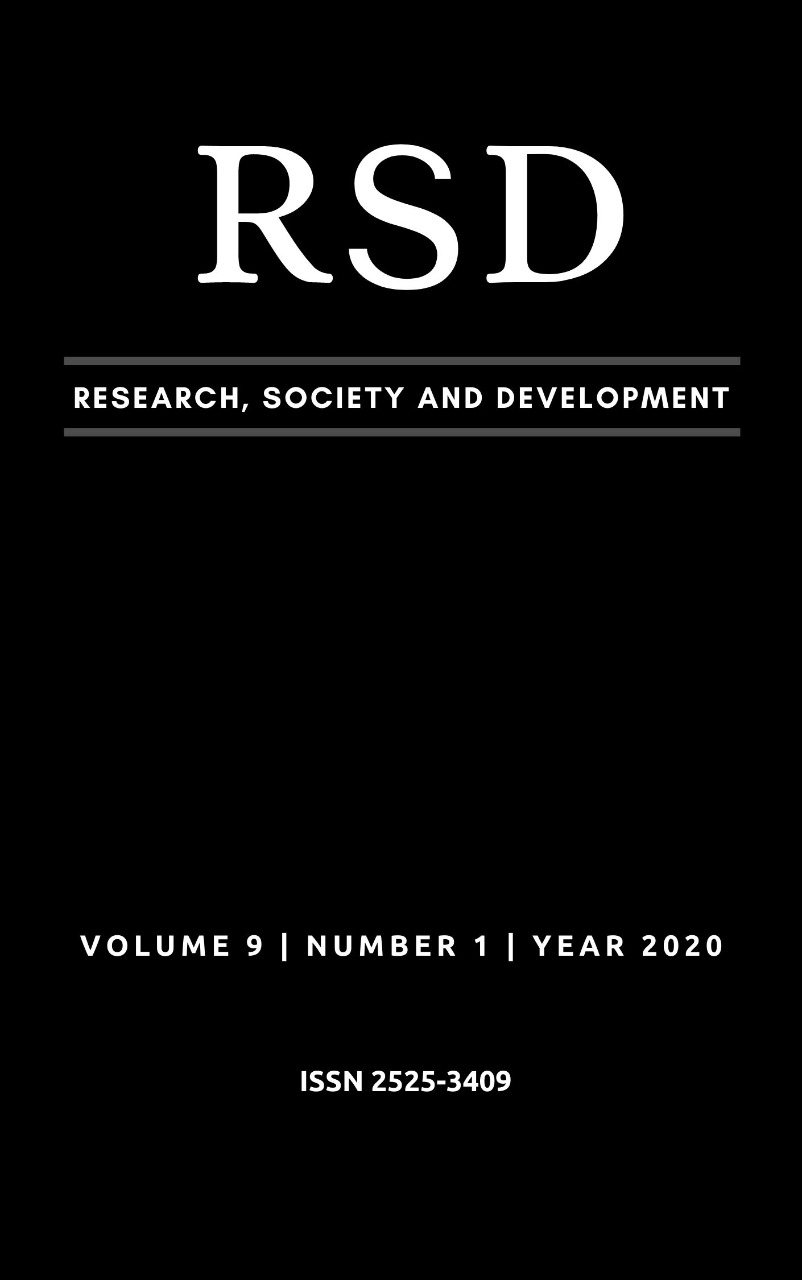Atuação do tradutor intérprete de Libras no ensino superior: implicações na disciplina de educação inclusiva
DOI:
https://doi.org/10.33448/rsd-v9i1.1843Palavras-chave:
Tradutor intérprete de Libras, Educação inclusiva, Estudantes surdos.Resumo
Este estudo de caso objetiva apresentar uma experiência de atuação como Tradutor Intérprete de Libras e Língua Portuguesa (TILSP) durante a disciplina de Educação Especial em uma Perspectiva Inclusiva em uma turma do curso de Letras – Licenciatura em Libras/Língua Portuguesa como Segunda Língua, ministrada na Universidade Federal do Rio Grande do Norte (UFRN), com a presença de 15 estudantes surdos e 22 ouvintes. Percebeu-se a lacuna de conhecimento prévio destes discentes acerca das temáticas da área de Educação Inclusiva que não contemplam a educação de surdos, por não fazer parte da realidade vivenciada por eles e um desinteresse inicial para com a disciplina em si. Com a atribuição de traduzir e interpretar as atividades didático-pedagógicas desenvolvidas nas instituições de ensino, de forma a viabilizar o acesso ao conhecimento dos conteúdos curriculares, o profissional TILSP tem a implicação de atuar não somente como um mediador linguístico entre surdos e ouvintes não usuários da Libras, mas também ser um partícipe ativo no processo de ensino-aprendizagem do aluno surdo, sendo um colaborador do docente responsável pela disciplina. Diante do que demonstraram os estudantes surdos no início e no fim do semestre quanto à aprendizagem dos conteúdos curriculares referentes à disciplina de Educação Especial Inclusiva e considerando o papel do TILSP como mediador linguístico e partícipe educacional, constatou-se que os alunos puderam, de forma efetiva, ter a devida acessibilidade ao conhecimento proposto neste contexto relatado.
Referências
Decreto lei nº 5.626, de 22 de dezembro de 2005. (2005). Regulamenta a Lei nº 10.436, de 24 de abril de 2002, que dispõe sobre a Língua Brasileira de Sinais - Libras, e o art. 18 da Lei nº 10.098, de 19 de dezembro de 2000. Recuperado em 07 outubro, 2019, de http://www.presidencia.gov.br/ccivil/_Ato2004-2006/2005/Decreto/D5626.htm.
Decreto lei nº 7.612, de 17 de novembro de 2011. (2011). Institui o Plano Nacional dos Direitos da Pessoa com Deficiência - Plano Viver sem Limite. Recuperado em 07 outubro, 2019, de http://www.planalto.gov.br/ccivil_03/_ato2011-2014/2011/decreto/d7612.htm.
Corrêa, J.R.S. (2015). A atuação do interprete de libras no ensino superior: estudo de caso de um estudante surdo. XIV Jornada do Núcleo de Ensino de Marília. Recuperado em 03agosto, 2019, de https://www.marilia.unesp.br/Home/Eventos/2015/jornadadonucleo/a-atuacao-do-interprete-de-libras.pdf
Fernandes, E. (2003). Linguagem e Surdez. Porto Alegre: Artmed.
Guarinello, A.C., Lisboa, T.R., Pereira, A.S., Santos, I.B., Iachinski, L.T., Marques, J.M. & Silva, R. Q. da. (2017). Qualidade de vida do profissional intérprete de língua de sinais. Distúrb Comun, 29(3), 462-469.
Lei nº 10.436, de 24 de abril de 2002. (2002). Dispõe sobre a Língua Brasileira de Sinais - Libras e dá outras providências. Recuperado em 07 outubro, 2019, de http://www.planalto.gov.br/ccivil_03/leis/2002/l10436.htm
Lei nº 12.319, de 1º de setembro de 2010. (2010). Regulamenta a profissão de Tradutor e Intérprete da Língua Brasileira de Sinais – Libras. Recuperado em 07 outubro, 2019, de http://www.planalto.gov.br/ccivil_03/_Ato2007-2010/2010/Lei/L12319.htm.
Martins, V.R.O. (2006). Implicações e conquistas da atuação do intérprete de língua de sinais no Ensino Superior. ETD - Educação Temática Digital, 7(2), 158-167. Recuperado em 07 outubro, 2019, dehttps://nbn-resolving.org/urn:nbn:de:0168-ssoar-101675
Pereira, A.S. et al. (2018). Metodologia da pesquisa científica. [e-book]. Santa Maria. Ed. UAB/NTE/UFSM. Disponível em: https://repositorio.ufsm.br/bitstream/handle/1/15824/Lic_Computacao_Metodologia-Pesquisa-Cientifica.pdf?sequence=1. Acesso em: 20 out. 2019.
Quadros, R.M. (2004). O tradutor e intérprete de língua brasileira de sinais e língua portuguesa. Secretaria de Educação Especial; Programa Nacional de Apoio à Educação de Surdos - Brasília: MEC; SEESP.
Quadros, R.M. (2014). Os polos do curso de Letras Libras EaD da Universidade Federal de Santa Catarina. In: Letras LIBRAS: ontem, hoje e amanhã. (pp. 191-232). Florianópolis: Editora UFSC.
Sampaio, I.S., & Santos, A.A. (2002). Leitura e redação entre universitários: avaliação de um programa de intervenção. Psicologia em Estudo, 7(1), 31-38. Recuperado em 07 outubro, 2019, de http://www.scielo.br/pdf/pe/v7n1/v7n1a04.pdf
Souza, R.M. (2008). O professor intérprete de língua de sinais em sala de aula: ponto de partida para se repensar a relação ensino, sujeito e linguagem. ETD - Educação Temática Digital, 8, 154-170. Recuperado em 07 outubro, 2019, de https://periodicos.sbu.unicamp.br/ojs/index.php/etd/article/view/697/712
Downloads
Publicado
Edição
Seção
Licença
Autores que publicam nesta revista concordam com os seguintes termos:
1) Autores mantém os direitos autorais e concedem à revista o direito de primeira publicação, com o trabalho simultaneamente licenciado sob a Licença Creative Commons Attribution que permite o compartilhamento do trabalho com reconhecimento da autoria e publicação inicial nesta revista.
2) Autores têm autorização para assumir contratos adicionais separadamente, para distribuição não-exclusiva da versão do trabalho publicada nesta revista (ex.: publicar em repositório institucional ou como capítulo de livro), com reconhecimento de autoria e publicação inicial nesta revista.
3) Autores têm permissão e são estimulados a publicar e distribuir seu trabalho online (ex.: em repositórios institucionais ou na sua página pessoal) a qualquer ponto antes ou durante o processo editorial, já que isso pode gerar alterações produtivas, bem como aumentar o impacto e a citação do trabalho publicado.


